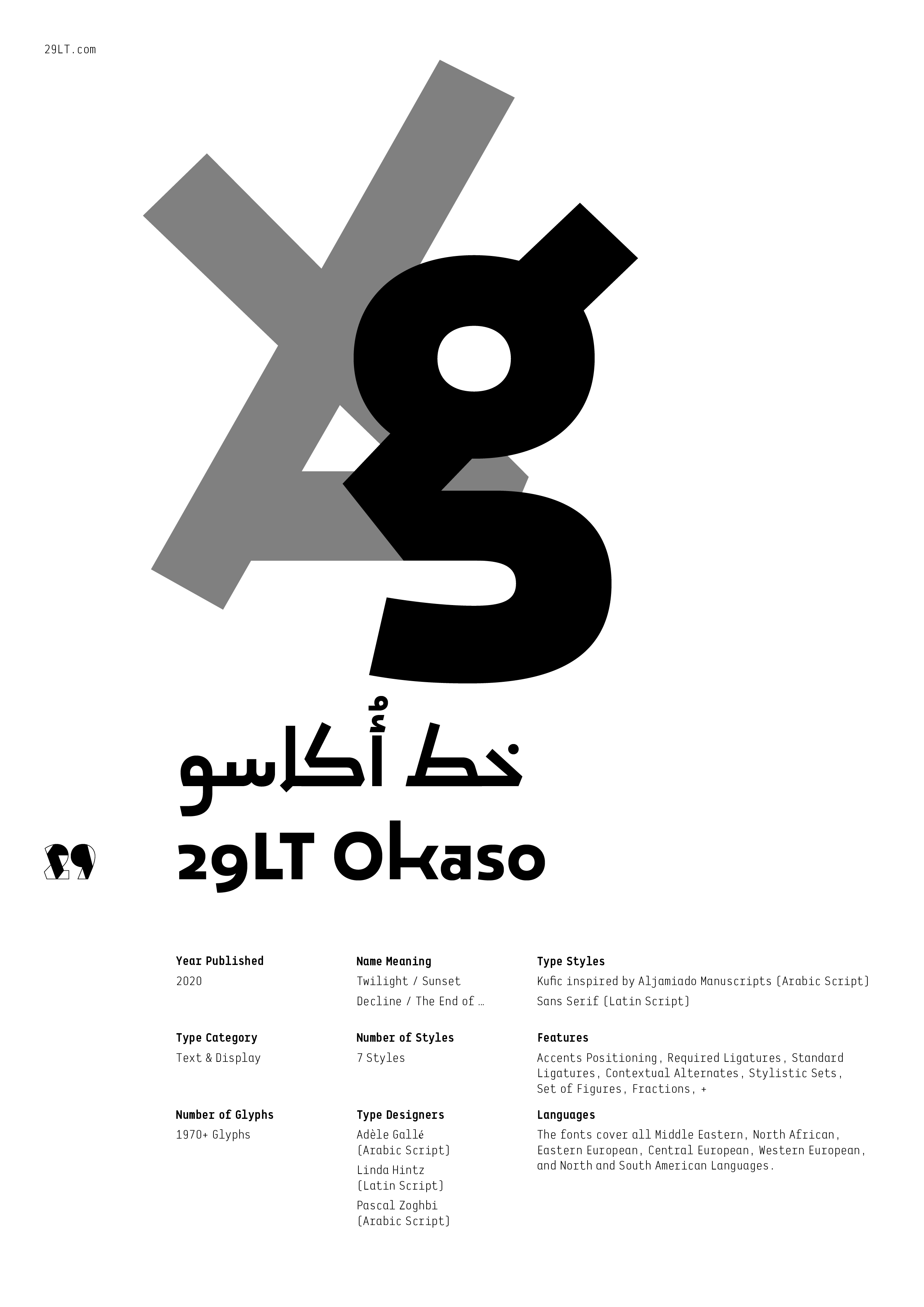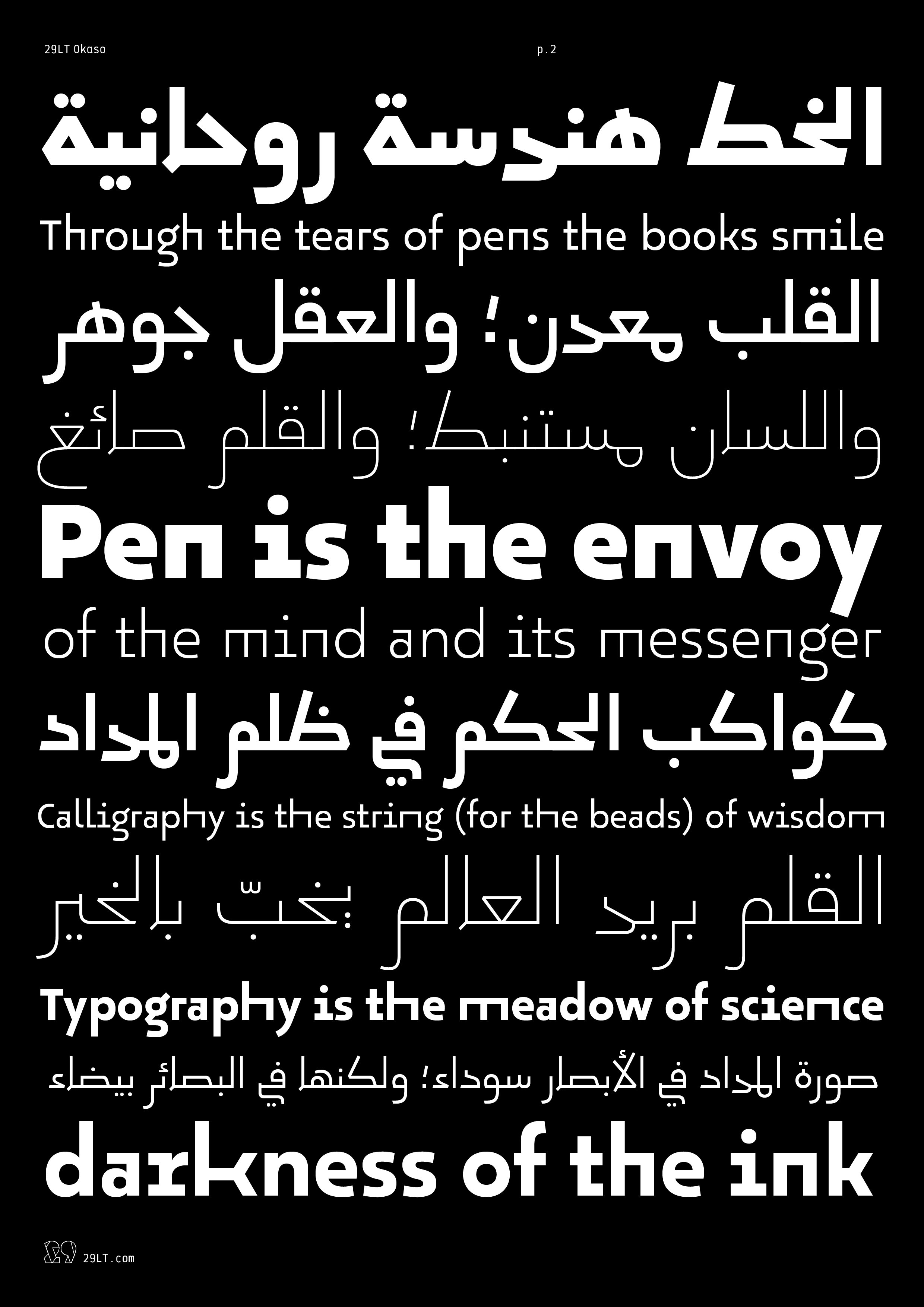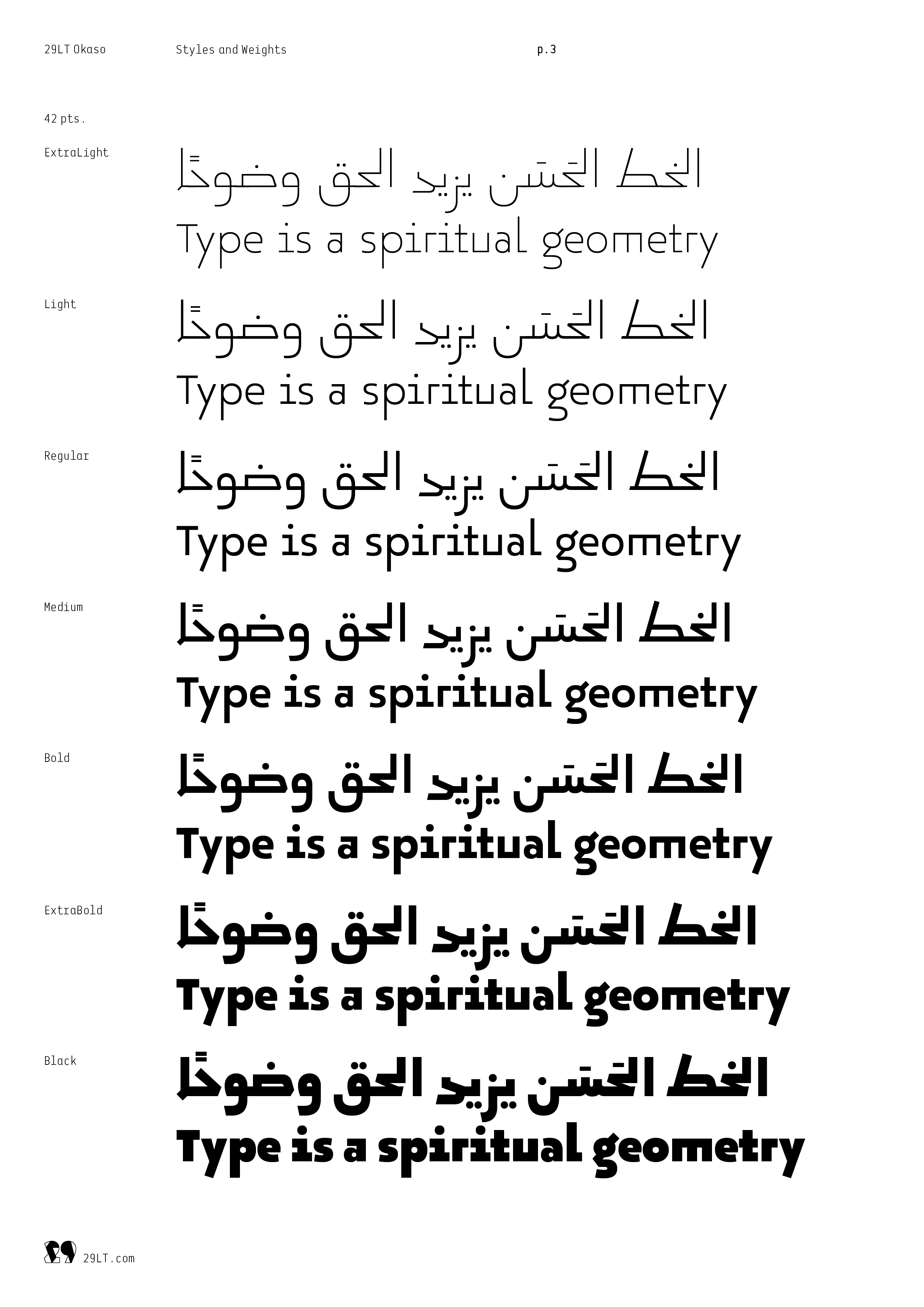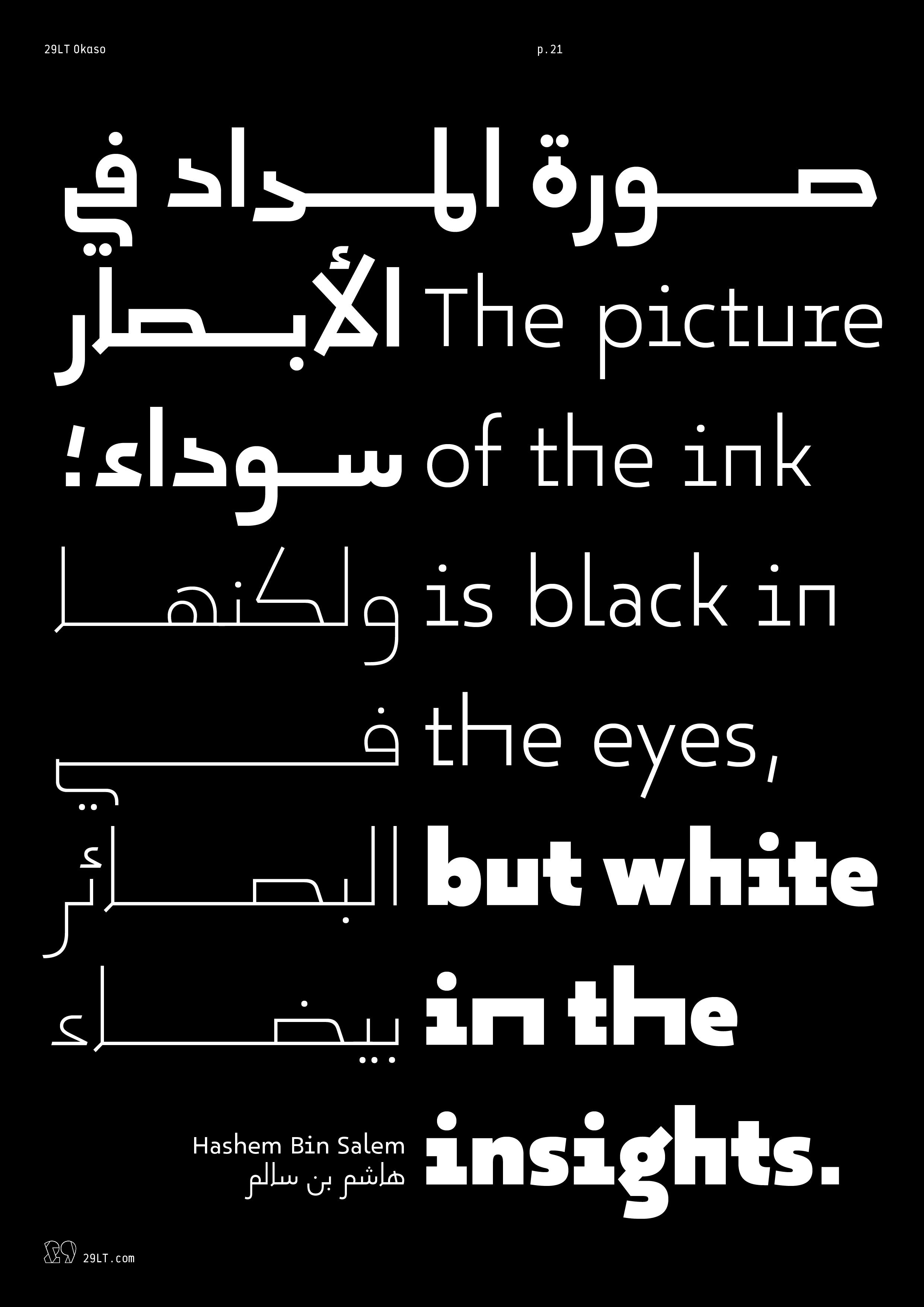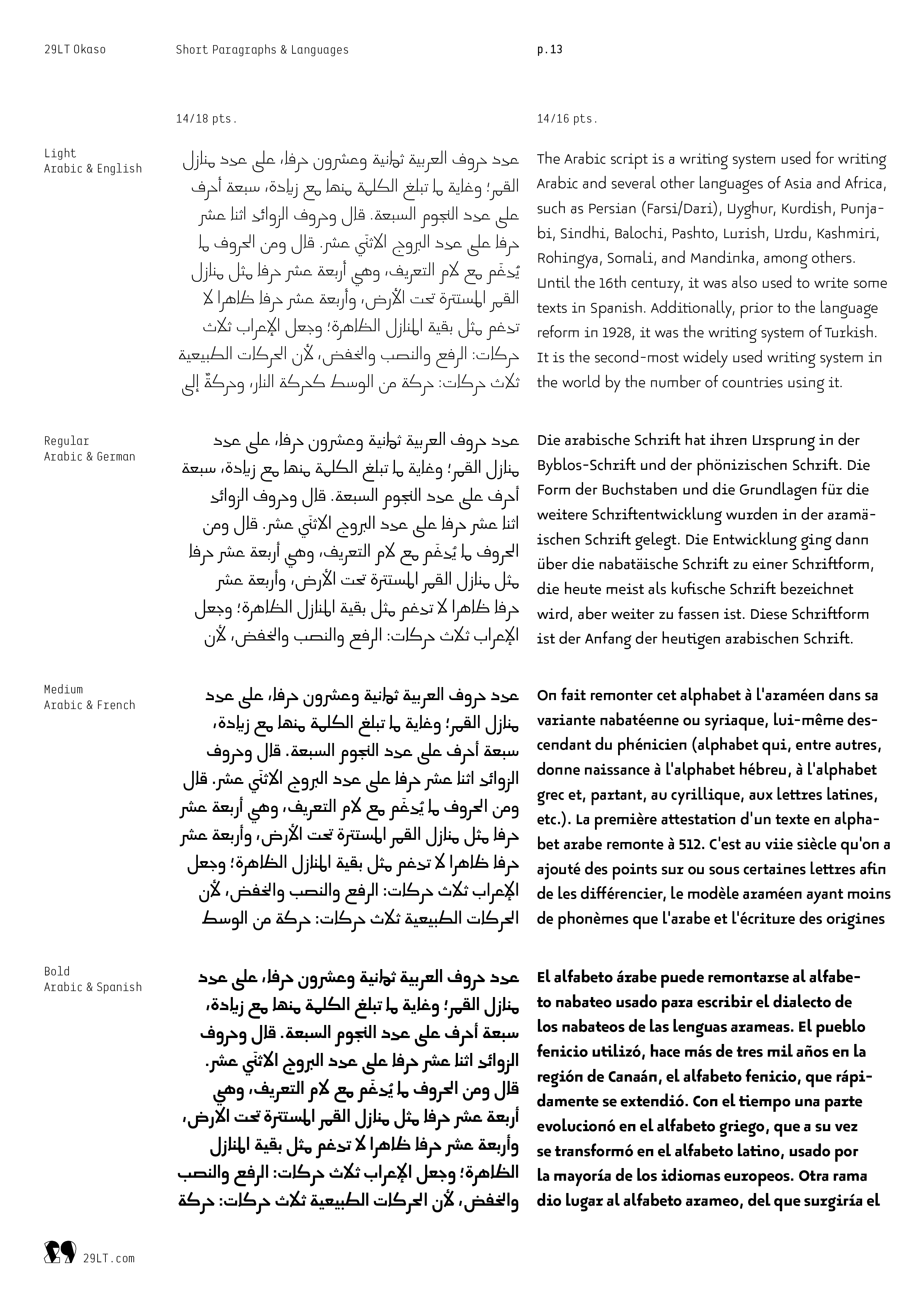29LT OKASO: An Inventive Throwback to Aljamiado Manuscripts
29LT Okaso is a geometric typeface with distinctively brave letterforms, that is far from both standard geometric fonts and Arabic fonts available on the market. Strongly influenced by letters found in vernacular Aljamiado manuscripts, 29LT Okaso, which name stems from archaic Spanish language and refers to the end of an era or a phase, features a bold and vibrant design. The outlines of its letters challenge traditional structures while preserving legibility. Solid forms and dynamic contours work in harmony to create a lively yet purposed corporate oddity.
29LT Okaso exists as a typeface on its own and can act as a companion to 29LT Oskura. In the Latin, Oskura can be used as an upright italic, especially when the stylistic set 3 is activated. In the Arabic, Oskura can be used as the cursive or freehand version of Okaso. A change of typographic voice can be achieved between the two, and interesting typographic combinations can be achieved. The typefaces share common parameters in many respects, such as vertical metrics, general glyph proportions, or weight distribution across the seven styles, making it easy to switch between one and the other within a project.
Abstracted from handwritten Aljamiado texts, 29LT Okaso is one-of-a-kind typeface: seeking to retain the spirit of the Andalusian Maghribi style, it embodies a free and simplified interpretation that gave birth to unique letterforms and ligatures absent from traditional Arabic calligraphy. These striking characteristics add both legibility and dramatic intensity to this typeface.
The low contrast geometric design approach, with short medial heights, long ascenders and descenders, and energetic letter structures draws Arabic and Latin scripts together. The Latin script emulates the vitality of the Arabic script with uncommon contextual alternates and stylistic sets that allow letters to switch between short and long, straight and round forms, or various widths.
WHY IT IS A TOP PICK
29LT Okaso stands out from standard Arabic fonts, both in aesthetics and functionality. It embodies a fascinating typographical experiment that actually works particularly well when seeking harmonious contrast between enigmatic and mystical overtones and contemporary designs.
Linda Hintz (Latin)
Pascal Zoghbi (Arabic)
Languages
Eastern European, Central European, Western European, North American, and South American languages written in the Latin script.
Afrikaans, Albanian, Arabic, Asu, Azerbaijani, Basque, Bemba, Bena, Bosnian, Catalan, Chiga, Colognian, Cornish, Croatian, Czech, Danish, Dutch, Embu, English, Esperanto, Estonian, Faroese, Filipino, Finnish, French, Friulian, Galician, Ganda, German, Gusii, Hungarian, Icelandic, Inari Sami, Indonesian, Irish, Italian, Jola-Fonyi, Kabuverdianu, Kalaallisut, Kalenjin, Kamba, Kikuyu, Kinyarwanda, Kurdish (Sorani & Kurmanji), Latvian, Lithuanian, Low German, Lower Sorbian, Luo, Luxembourgish, Luyia, Machame, Makhuwa-Meetto, Makonde, Malagasy, Malay, Maltese, Manx, Mazanderani, Meru, Morisyen, North Ndebele, Northern Sami, Norwegian Bokmål, Norwegian Nynorsk, Nyankole, Oromo, Farsi [Persian], Polish, Portuguese, Romanian, Romansh, Rombo, Rundi, Rwa, Samburu, Sango, Sangu, Scottish Gaelic, Sena, Shambala, Shona, Slovak, Slovenian, Soga, Somali, Spanish, Swahili, Swedish, Swiss German, Taita, Teso, Turkish, Turkmen, Upper Sorbian, Urdu, Vunjo, Walser, Welsh, Western Frisian, Wolof, Zulu.
Arabic Transliteration Letters.
- Default
- Optional
Check the Bundles tab for discounted deals.
